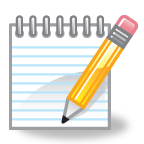Designing an Experiment

CAUSE AND EFFECT
(Observation)...
Scientists observe things from the viewpoint of
cause and effect. Scientists assume that all
events are the result of a collection of other earlier events.
Take a split-second. Watch something happen, like fireworks
exploding, an alarm clock starts ringing, or a leaf twisting in
the breeze. The events that happened before the split-second that
you watched are the "causes". The single-event that you
saw during the split-second is called the "event". With
the help of your family or classmates, pick a single,
split-second event. Try to name twenty or so other split-second
events that helped cause it.
THE SCIENTIFIC METHOD...
(Experiment)...
A collection of causes can produce a predictable event.
Gaining new knowledge about an observation is simply understanding how
and why the causes create that particular event. Science has developed a step-by-step method to investigate an
event. It is called an "experiment". With care,
honesty, and effort the scientific method should help you design an experiment. You should be able to discover the correct
cause-and-effect relationships. The following steps will lead you
through the scientific method and experimental design:
A. PICK A TOPIC TO STUDY. Before an event can be studied you must have some idea of what it is that you want to observe. Your topic might be "acid rain", "growth rates of a plant", or "Why so many Pearson residents eat early vs. eating late".
B. LIMIT YOUR TOPIC. You have very little time and resources. You will only be able to study an extremely small collection of events. You must, therefore, limit your experimental design to one or two specific events. "I will study the effect of class times on residential eating time."
C. STUDY, OBSERVE, AND GATHER. Visit your study site (cafeteria, the Rain Forest, etc), as well as the library and to read about your limited topic. Observe related events. Gather existing information concerning your limited topic. Look for unexplained or unexpected events or results. Also, you should learn something about the field of mathematics known as statistics, to best present your data.
D. GENERALIZE. Organize what you know about your topic. Make lists of known causes for specific events. Describe what generally happens when you observe related events.
E. HYPOTHESIZE, FORM A QUESTION, & PREDICT. Write a sentence that predicts what will happen if you do your experiment. This statement is called a "hypothesis". Your theory must agree with observations already studied. From your theory, put together the exact question that you want to answer with your experiment. State what you think would happen if some of the causes of your event were changed. Causes that can change are called "variables". Some variables are turned on or off like a light switch; others change in size like the temperature setting of an oven.
F. EXPERIMENT. Design and do a series of experiments. You must design each experiment so you can observe the results if one and only one variable is changed. By changing just one variable, you can determine that variable's effect on your chosen event. To see the real effect, you need to change the size of a single variable several times. Be sure to include one or more experiments when none of the variables are changed on purpose. This is called the control experiment. The control is very important. It shows the normal results from your experiment if you don't try to change anything. Be careful, you may be able to keep many variables from changing, but some you usually can't do anything about. Some variables you have control over are room temperature, time of day, how far you stretch a spring, relative humidity, and how hungry your human or animal subject is. Some variables that you can't do anything about are atmospheric pressure, how bright the sunshine is, or the mood, skill, reflexes, or previous dietary habits of you and/or your subjects.
G. EXAMINE YOUR RESULT or (predict your results - You don't need to actually do an experiment, but you can speculate on what the results might be). Did your experiments give you the expected results? Why or why not? Be very honest! Reexamine your experiments. Was more than one variable changed at one time? Was your experiment done with the exact same steps each time? Are there other causes that you had not considered or observed? Were there errors in your observations? How large were the errors? If your physical skills were involved, how much better did you get at your job with each repeat? Remember that understanding errors and reporting that a suspected variable did not change the results can be valuable information.
H. DRAW CONCLUSIONS.
Tell us what variables are important? Why you think your
hypothesis is correct? What data is the proper data to collect? or What
would have to be done to finish your experiment?
HOMEWORK
![]()
The write-up of your
Experimental Design should have 5 parts:
1. Your observation - what you observed that you want to
experimentally test
2. Your premise or
hypothesis - what you predict will happen
in the experiment
3. The design of your experiment - what you will test, how
you will test it,
and what the control
variable will be
4. Your predicted results for the experiment and the control
5. How the experiment might establish your premise or hypothesis.
You will turn in your Experimental Design to your
Workshop leader...
A due date will be announced by Professor Mallery.
cm